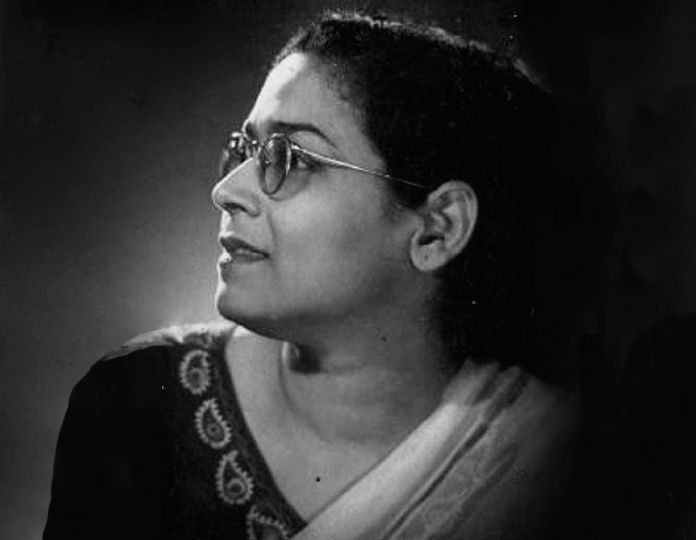Ismat Chughtai ranks among the most influential Urdu writers of the 20th century. Her stories challenged social norms, focusing on women’s experiences in Indian society. She also contributed to films as a writer and occasional filmmaker. Her work bridged literature and cinema, earning her lasting recognition.
Early Life and Career
Ismat Chughtai was born on August 21, 1915, in Badayun (Budaun), Uttar Pradesh, India. She grew up in a large Muslim family. Her father, Mirza Qasim Beg Chughtai, served as a civil servant, leading to frequent relocations. These moves took her to cities like Jodhpur and Agra. She had nine siblings, with four brothers becoming writers or filmmakers. Her early life exposed her to conservative values, which she later questioned in her writings.
Ismat attended a missionary school in Agra before completing her schooling at AMU. She then graduated from Isabella Thoburn College, Lucknow. She pursued higher studies at Aligarh Muslim University, earning a bachelor’s in education. Ismat became one of the first Muslim women to graduate from there. Later, she completed a master’s in education from Lucknow University. Her education equipped her with tools to challenge societal norms.
She began writing short stories in the 1930s, when she was still a student, publishing in Urdu magazines After completing her education, Chughtai started teaching in Aligarh. She joined the Progressive Writers’ Association in 1936, aligning with leftist ideals. This group shaped her focus on social issues. publishing in Urdu magazines.
She Changed The Way

Her first collection, “Kaliyan,” appeared in 1941. She followed it with “Choten,” “Ek Baat,” “Chhui Mui,” “Do Haath,” “Badan ki Khushboo,” “Amarbel,” “Thori si Paagal,” and “Aadhi Aurat Aadha Khwaab.”
Chughtai’s most notable work is “Lihaaf (The Quilt),” published in 1942. The story explores a woman’s loneliness in a loveless marriage, hinting at homosexual themes through subtle imagery. It sparked controversy, leading to an obscenity trial in 1944. The court acquitted her, but the case boosted her fame.
Some of her most memorable stories include “Nanhi Ki Nani,” “Chauthi Ka Joda,” “Bichchu Phophi,” “Kafir,” “Gainda,” “Khidmatgaar,” and “Dheet,” among others. One of her most memorable works was the sketch of her brother, Azeem Beg Chughtai, by the name of “Dozakhi.” After reading it, Sadat Hassan Manto said to his sister, “If you promise to write such an article on my death, I’m ready to die.
Another key work, “Ziddi (1945),” depicts a poor girl’s romance with a rich man. The novel critiques class differences. “Terhi Lakir (1943)” follows a woman’s life from childhood to adulthood, addressing gender inequality. Her play “Intzaar” examines family dynamics. These pieces showcase her sharp observation of middle-class Muslim life.
Other Work
Her other novels include Saudai (1964), Ajeeb Aadmi (1970), and Ek Qatra Khoon (1975), as well as the novellas Masooma (1961), Dil ki Duniya (1966) and Jungli Kabootar (1970). She wrote the children’s novels Teen Anarhi and Naqli Rajkumar. She also wrote many plays like Fasadi, Shaitan, Intikhab, Dhani Bankein, Dozakh and Tanhai ka Zehr
Apart from fiction, she also wrote extensively on various social topics. Her essay, “Fasadat aur Adab,” explored the impact of the communal divide on our literature. She wrote about famous writer Krishan Chandra in “Chirag Jal Rahe Hain” and “Mera Dost Mera Dushman,” on Manto. Her autobiography, Kaghazi hai Pairahan, remains unfinished.
Ismat Chughtai In Films
Chughtai entered films in the 1940s as a scriptwriter. She wrote dialogues for “Ziddi” (1948), directed by Shahid Lateef, her husband. The film adapted her novel, starring Dev Anand and Kamini Kaushal. She scripted “Arzoo” (1950), a romance starring Dilip Kumar and Kamini Kaushal. In 1951, she co-wrote “Buzdil” with Shahid Lateef followed by “Darwaza (1954),” and “Society (1955).”
In 1953 she produced and co-directed “Fareb,” starring Amar, Maya Dass, Kishore Kumar, Lalita Pawar and Zohra Sehgal. She then produced and wrote “Sone Ki Chidiya (1958),” directed by Shahid Lateef and starring Talat Mehmood, Balraj Sahni and Nutan. The same year she produced “Lala Rukh (1958),” starring Talat Mehmood and Shyama. It was the film that gave Khayyama and Kaifi Azmi much-needed visibility.
Her 1973 film “Garam Hawa,” directed by M.S. Sathyu, adapts her story on Partition. The script highlights communal tensions, winning a National Award. She also wrote the dialogue for Shayam Benegal’s period epic “Junoon” (1978).
Chughtai directed “Faslah” (1974), a drama about relationships. She co-produced it with Shahid Lateef. The project stemmed from her desire to control adaptations of her work. It received limited release but showcased her directorial vision. She also wrote dialogues for Barkha Bahar (1973) and Mehfil (1978).
Personal Life
Chughtai married filmmaker Shahid Lateef in 1942. They met at Aligarh Muslim University. The couple moved to Bombay, collaborating professionally. They went on to have daughters, Seema, and Sabrina. Chughtai balanced career and family, often drawing from personal life in her stories. In later years, she lived in Mumbai, writing until her health declined. She died on October 24, 1991, at 76. She suffered with Alzheimer’s disease in her later years.
Ismat Chughtai on IMDB